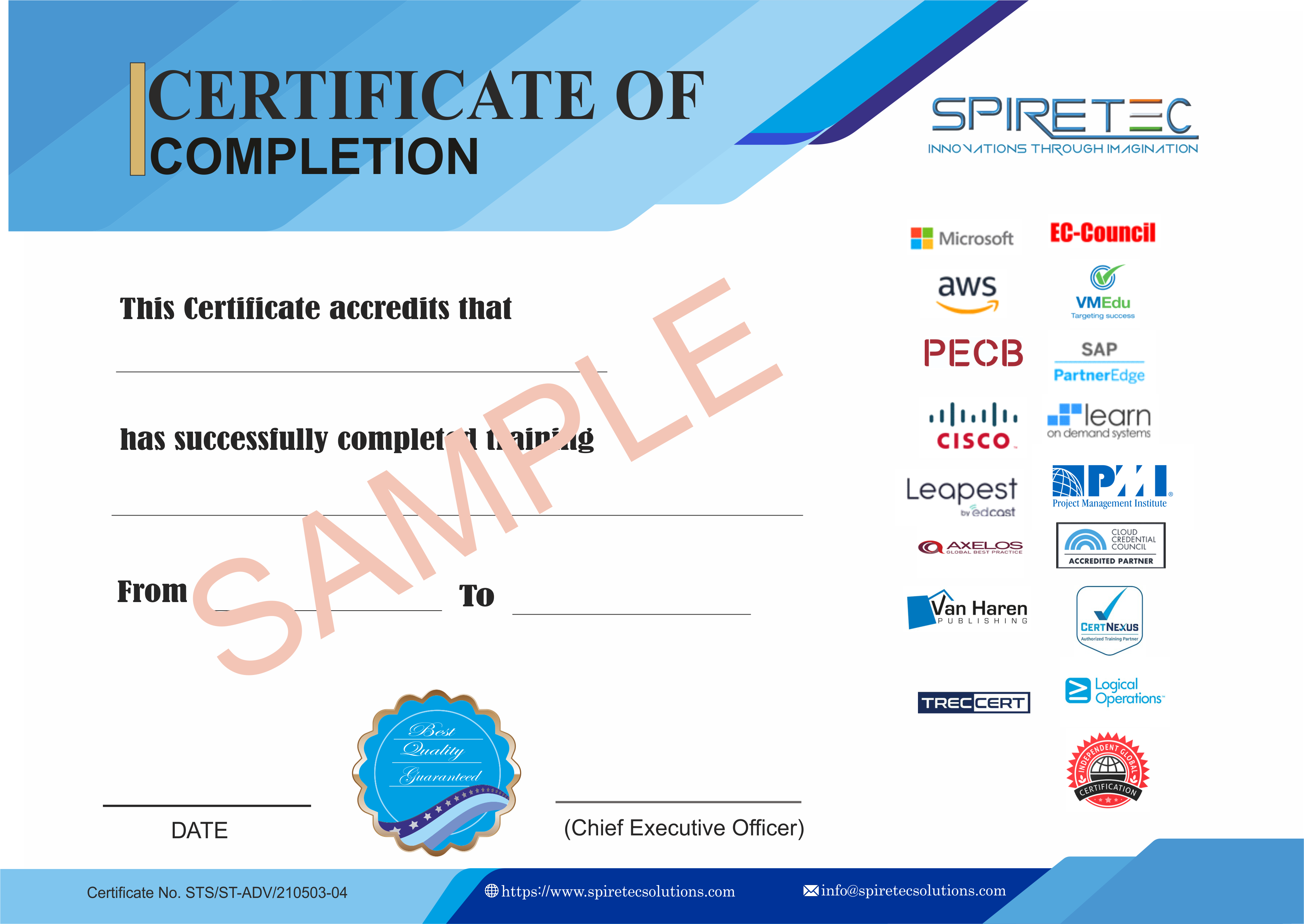This course is designed for IT professionals looking to configure advanced Windows Server services using a blend of on-premises, hybrid, and cloud technologies. The course covers leveraging Azure's hybrid capabilities, migrating virtual and physical server workloads to Azure IaaS, and securing Azure VMs running Windows Server. It also focuses on high availability, troubleshooting, and disaster recovery, utilizing tools and technologies such as Windows Admin Center, PowerShell, Azure Arc, Azure Automation Update Management, Microsoft Defender for Identity, Azure Security Center, Azure Migrate, and Azure Monitor.
Audience Profile:
The primary audience for this course includes IT professionals with experience in Windows Server who want to extend their on-premises environments by integrating hybrid technologies. This course is also ideal for those who already manage on-premises core technologies and are looking to secure and protect their environments, migrate workloads to Azure IaaS, and implement a highly available, fully redundant environment with robust monitoring and troubleshooting capabilities.
Prerequisites:
At Course Completion:
After completing this course, students will be able to:
-
Harden the security configuration of the Windows Server operating system environment
-
Enhance hybrid security using Azure Security Center, Microsoft Sentinel, and Windows Update Management
-
Apply Windows Server and Azure security features to protect critical resources
-
Implement high availability and disaster recovery solutions for hybrid and cloud environments
-
Deploy recovery services for hybrid scenarios using Azure Backup and Site Recovery
-
Plan and implement hybrid and cloud-only migration, backup, and recovery strategies
-
Perform upgrades and migrations for Active Directory Domain Services (AD DS) and storage infrastructure
-
Manage and monitor hybrid workloads using Windows Admin Center (WAC), Azure Arc, Azure Automation, and Azure Monitor
-
Implement service and performance monitoring solutions and apply systematic troubleshooting techniques
Course Outline:
Module 1: Secure Windows Server user accounts
-
Configure and manage user accounts to limit security threats across an organization
-
Apply Protected Users settings, policies, and authentication silos to protect highly privileged user accounts
-
Describe and configure Windows Defender Credential Guard
-
Configure Group Policy to block the use of NTLM for authentication
Module 2: Hardening Windows Server
-
Manage local administrator passwords using Local Administrator Password Solution
-
Limit administrative access to Privileged Access Workstations (PAWs)
-
Explain how to secure domain controllers from being compromised
-
Describe how to use the Microsoft Security Compliance Toolkit to harden servers
-
Secure SMB traffic using SMB encryption
Module 3: Windows Server update management
Module 4: Secure Windows Server DNS
Module 5: Implement Windows Server IaaS VM network security
-
Implement Network Security Groups (NSGs) with Windows Server IaaS VMs
-
Implement adaptive network hardening
-
Implement Azure Firewall
-
Implement Windows Defender Firewall in Windows Server IaaS VMs
-
Choose an appropriate filtering solution
-
Capture network traffic with Network Watcher
Module 6: Audit the security of Windows Server IaaS Virtual Machines
-
Describe Azure Security Center
-
Enable Azure Security Center in hybrid environments
-
Onboard Windows Server computers to Azure Security Center
-
Implement and assess security policies
-
Describe Azure Sentinel
-
Implement SIEM and SOAR
-
Protect your resources with Azure Security Center
Module 7: Manage Azure updates
Module 8: Create and implement application allowlists with adaptive application control
Module 9: Configure BitLocker disk encryption for Windows IaaS Virtual Machines
-
Describe Azure Disk Encryption
-
Configure Key Vault to support Azure Disk Encryption
-
Explain how to encrypt Azure IaaS VM hard disks
-
Back up and recover encrypted data from IaaS VM hard disks
Module 10: Implement change tracking and file integrity monitoring for Windows IaaS VMs
-
Implement Change Tracking and Inventory
-
Manage Change Tracking and Inventory
-
Manage tracked files
-
Implement File Integrity Monitoring
-
Select and monitor entities
-
Use File Integrity Monitoring
Module 11: Introduction to Cluster Shared Volumes
Module 12: Implement Windows Server failover clustering
-
Describe Windows Server failover clustering
-
Implement Windows Server failover clustering
-
Manage Windows Server failover clustering
-
Implement stretch clusters
-
Describe cluster sets
Module 13: Implement high availability of Windows Server VMs
-
Describe the Hyper-V high availability options
-
Describe Hyper-V VMs load balancing
-
Implement Hyper-V VMs live migration
-
Implement Hyper-V VMs storage migration
Module 14: Implement Windows Server File Server high availability
-
Provide a high-level overview of Windows Server File Server high-availability options
-
Describe the characteristics of, and high-level implementation steps for Cluster Shared Volumes (CSV)
-
Describe the characteristics of, and high-level implementation steps for Scale-Out File Server (SOFS)
-
Describe the characteristics of, and high-level implementation steps for Storage Replica
Module 15: Implement scale and high availability with Windows Server VM
-
Describe virtual machine scale sets
-
Implement scaling
-
Implement load-balancing virtual machines
-
Implement Azure Site Recovery
Module 16: Implement Hyper-V Replica
-
Describe Hyper-V Replica, prerequisites, and high-level architecture
-
Describe Hyper-V Replica usage scenarios, available replication settings, and security considerations
-
Configure Hyper-V Replica settings, health monitoring, and failover options
-
Implement Hyper-V Replica
-
Describe extended replication
-
Describe Site Recovery
-
Implement Site Recovery
Module 17: Protect your on-premises infrastructure from disasters with Azure Site Recovery
Module 18: Implement hybrid backup and recovery with Windows Server IaaS
-
Describe Azure Backup
-
Implement Recovery Vaults
-
Implement Azure Backup policies
-
Recover Windows IaaS VMs
-
Perform backup and recovery of on-premises workloads
-
Explain how to manage Azure VM backups with Azure Backup
Module 19: Protect your Azure infrastructure with Azure Site Recovery
-
Protect Azure virtual machines with Azure Site Recovery
-
Run a disaster recovery drill to validate protection
-
Failover and failback your virtual machines
Module 20: Protect your virtual machines by using Azure Backup
Module 21: Active Directory Domain Services migration
-
Compare upgrading an AD DS forest and migrating to a new AD DS forest
-
Describe how to upgrade an existing AD DS forest
-
Describe how to migrate to a new AD DS forest
-
Describe Active Directory Migration Tool (ADMT)
Module 22: Migrate file server workloads using Storage Migration Service
-
Describe Storage Migration Service and its usage scenarios
-
Identify the requirements for using Storage Migration Service
-
Describe how to migrate a server with Storage Migration Service
-
List the considerations for using Storage Migration Service
Module 23: Migrate Windows Server roles
Module 24: Migrate on-premises Windows Server instances to Azure IaaS virtual machines
-
Plan your migration
-
Describe Azure Migrate
-
Migrate server workloads using Windows Server Migration Tools
-
Assess physical servers with Azure Migrate
-
Migrate on-premises servers to Azure
Module 25: Upgrade and migrate Windows Server IaaS virtual machines
-
Describe Windows Server IaaS migration
-
Explain how to migrate workloads using Windows Server Migration tools
-
Describe storage migration
-
Migrate file servers by using the Storage Migration Service
Module 26: Containerize and migrate ASP.NET applications to Azure App Service
-
Discover and containerize your ASP.NET app running on Windows machines using Azure Migrate: App Containerization
-
Build a container image for your ASP.NET application
-
Deploy your containerized application to Azure App Service using Azure Migrate: App Containerization
Module 27: Monitor Windows Server performance
Module 28: Manage and monitor Windows Server event logs
Module 29: Implement Windows Server auditing and diagnostics
Module 30: Troubleshoot Active Directory
-
Recover the AD DS database, objects in AD DS, and SYSVOL
-
Troubleshoot AD DS replication
-
Troubleshoot Hybrid authentication issues
Module 31: Monitor Windows Server IaaS Virtual Machines and hybrid instances
-
Enable Azure Monitor for VMs
-
Monitor an Azure VM with Azure Monitor
-
Enable Azure Monitor in hybrid scenarios
-
Collect data from a Windows computer in a hybrid environment
-
Integrate Azure Monitor with Microsoft Operations Manager
Module 32: Monitor your Azure virtual machines with Azure Monitor
-
Understand which monitoring data you need to collect from your VM
-
Enable and view recommended alerts and diagnostics
-
Use Azure Monitor to collect and analyze VM host metrics data
-
Use Azure Monitor Agent to collect VM client performance metrics and event logs
Module 33: Troubleshoot on-premises and hybrid networking
-
Diagnose DHCP and DNS problems in on-premises contexts
-
Diagnose IP configuration and routing problems
-
Implement Packet Monitor to help diagnose network problems
-
Use Azure Network Watcher to troubleshoot Microsoft Azure virtual networks
Module 34: Troubleshoot Windows Server Virtual Machines in Azure
-
Troubleshoot VM deployment and extension issues
-
Troubleshoot VM startup and performance issues
-
Troubleshoot VM storage and encryption issues
-
Troubleshoot connectivity to VMs







 Live Online Training (Duration : 32 Hours)
Live Online Training (Duration : 32 Hours)
